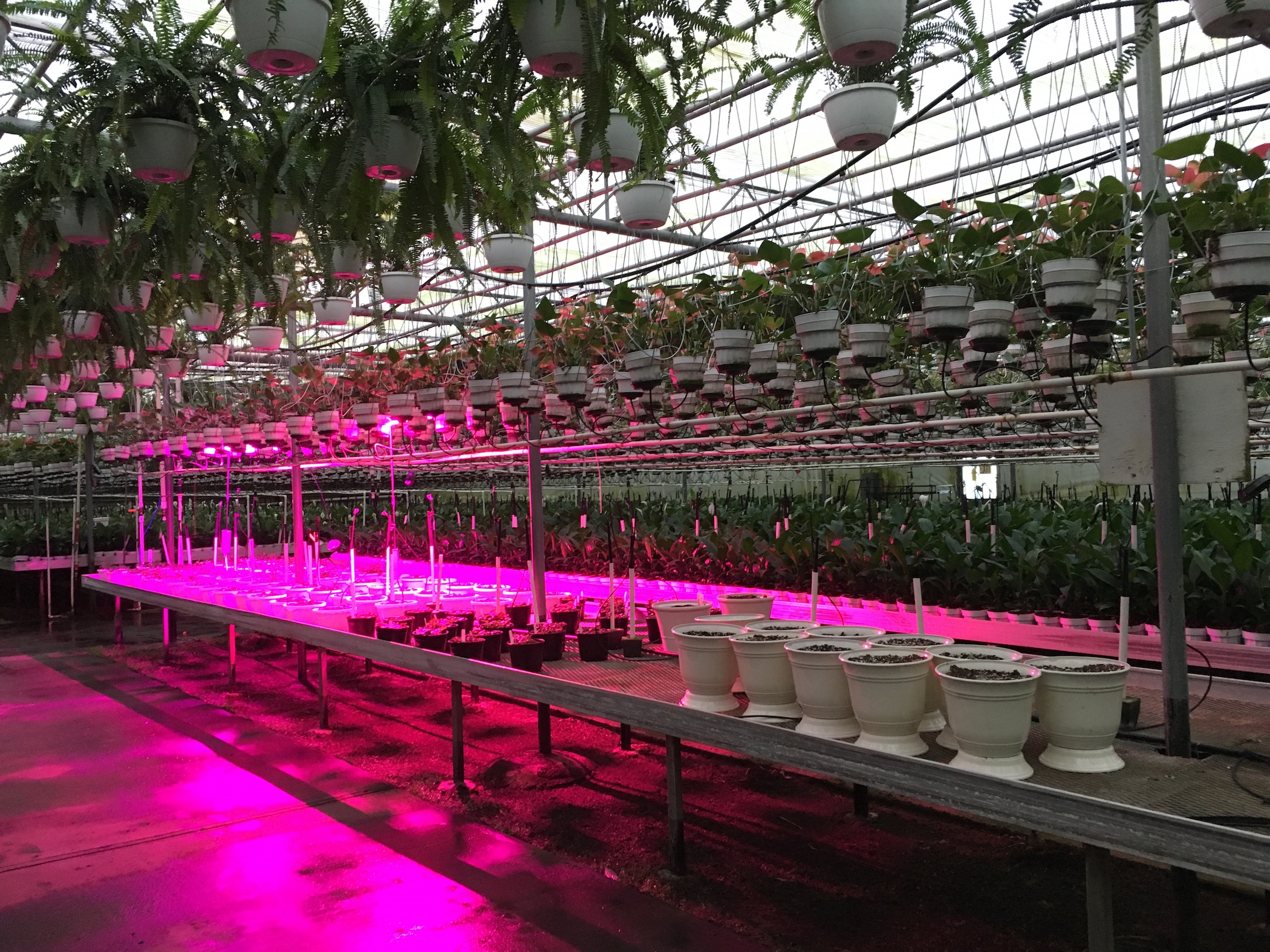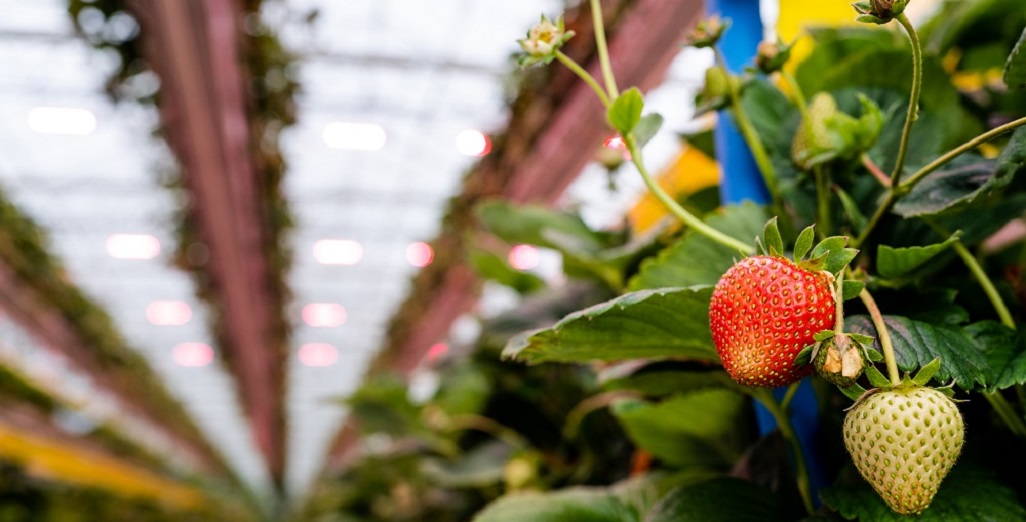Strawberry Plant Light Requirements: Strawberry plants require a minimum of 6-8 hours of direct sunlight per day. Additionally, they thrive in full sun conditions.
Strawberries are a popular and delicious fruit that many people enjoy growing in their gardens or containers. To be successful in growing strawberries, it is important to understand their light requirements. Strawberry plants need a minimum of 6-8 hours of direct sunlight per day to thrive.
This means that they should be placed in an area that receives ample sunlight throughout the day. Full sun conditions are ideal for strawberry plants, as they will promote healthy growth and fruit development. We will explore the light requirements of strawberry plants and provide tips on how to ensure they receive the right amount of sunlight for optimal growth.
[ez-toc]

Credit: hortamericas.com
1. Importance Of Light For Strawberry Plants
Strawberry plants depend on adequate light for their growth and productivity. The right amount of light promotes strong photosynthesis, leading to healthier plants and higher fruit yields. It is essential to provide the necessary light requirements to ensure optimum growth and the best results for strawberry cultivation.
Light is essential for the healthy growth and development of strawberry plants. Adequate lighting ensures that strawberries receive the energy they need to produce delicious fruits. In this section, we will explore the benefits of adequate lighting and the impact that insufficient lighting can have on these plants.
1.1 Benefits Of Adequate Lighting
Adequate lighting provides strawberry plants with several important benefits:
- Photosynthesis: Light is vital for the process of photosynthesis, where plants convert light energy into sugars, enabling them to grow and thrive. Strawberry plants rely on this process to produce the energy required for their fruiting and overall health. With sufficient lighting, strawberries can photosynthesize efficiently, leading to better plant growth and an abundant harvest.
- Healthy Leaf Development: Light plays a crucial role in the development of strong and healthy leaves. Ample lighting helps strawberry plants create an adequate number of chloroplasts, the organelles responsible for photosynthesis, which are necessary for optimal leaf growth. This ensures that the plants can absorb as much light as possible, maximizing their potential for energy production.
- Enhanced Flowering: Strawberry plants require the right amount of light to stimulate the flowering process. Sufficient lighting triggers the production of plant hormones necessary for flower bud development. When strawberry plants receive enough light, they produce an abundant number of flowers, which ultimately leads to a bountiful yield of juicy strawberries.
- Higher Fruit Quality: The quality of strawberries is greatly influenced by the amount and intensity of light they receive. Ample lighting ensures that the fruits develop vibrant colors and reach their full flavor potential. Additionally, strawberries exposed to adequate light experience increased sugar production, resulting in sweeter and more delicious berries.
1.2 Impact Of Insufficient Lighting
Insufficient lighting can have detrimental effects on strawberry plants, hindering their growth and reducing fruit production:
- Stunted Growth: When strawberry plants do not receive enough light, their growth becomes stunted. Insufficient lighting limits their ability to photosynthesize effectively, resulting in weaker stems and smaller leaves. This can impair the overall health and vigor of the plants.
- Poor Flower Development: Inadequate lighting negatively affects the development of flower buds. When strawberry plants lack the necessary amount of light, the formation of flower buds can be delayed or inhibited altogether. This leads to reduced flowering and ultimately diminishes the potential fruit yield.
- Reduced Fruit Size and Flavor: Insufficient lighting can result in smaller and less flavorful strawberries. Without enough light, the fruits may not develop to their full size, and their flavor may be compromised. They might also have a paler and less appealing appearance.
- Inadequate Sugar Production: Light is essential for the production of sugars in strawberry plants. Insufficient lighting can hinder this process, resulting in lower sugar levels in the fruits. This not only affects the taste but also the shelf life of the strawberries.

Credit: www.grower2grower.co.nz
2. Understanding Strawberry Plant Light Requirements
As a strawberry enthusiast, it’s important to understand the light requirements of your plants in order to provide them with the optimal growth conditions. Adequate light is crucial for strawberry plants to undergo photosynthesis and produce the sweet and juicy berries we all love. In this section, we will explore the natural lighting conditions, ideal light intensity, and optimal light duration for your strawberry plants.
2.1 Natural Lighting Conditions
Strawberry plants thrive best in full sunlight. They require at least six hours of direct sunlight each day to promote healthy growth and maximize fruit production. While they can tolerate partial shade, it’s important to note that insufficient light exposure may result in smaller and fewer berries. Therefore, it is advisable to position your strawberry plants in a location that receives maximum sunlight throughout the day.
2.2 Ideal Light Intensity
The intensity of light is another important factor to consider when it comes to meeting the light requirements of strawberry plants. Ideally, strawberry plants thrive in an ideal light intensity of 8,000 to 10,000 lux. Lux is a unit of measurement that represents the level of light intensity. To ensure your plants receive adequate light intensity, you can use a light meter or smartphone app specifically designed for measuring lux levels. This will help you determine if your strawberry plants are receiving the optimal amount of light intensity for optimal growth.
2.3 Optimal Light Duration
Strawberry plants require the right amount of light duration to flourish. Generally, they require 12 to 14 hours of light per day during their vegetative growth stage. It’s important to note that this duration may vary depending on the specific strawberry variety and environmental conditions. During the fruiting stage, a slightly shorter light duration of 8 to 10 hours per day is recommended. This shift in light duration helps simulate natural daylight changes and triggers the fruiting process. Therefore, it’s crucial to adjust the light exposure accordingly to ensure the best results.
By understanding and providing the appropriate light conditions for your strawberry plants, you can ensure a bountiful harvest of delicious and healthy strawberries. Now that you have a grasp of the natural lighting conditions, ideal light intensity, and optimal light duration, you can confidently create the perfect environment for your strawberry plants to thrive.
3. Choosing The Right Type Of Lighting
When it comes to growing strawberries, choosing the right type of lighting is crucial to ensure optimal growth and fruiting. In this section, we will explore the differences between natural sunlight and artificial lighting, the various types of artificial lights available, and the factors to consider when selecting the most suitable lighting for your strawberry plants.
3.1 Natural Sunlight Vs. Artificial Lighting
Strawberries thrive in bright sunlight, but not all of us have access to a garden with the perfect sun exposure. That’s where artificial lighting comes into play. While natural sunlight is undoubtedly the ideal choice for plants, artificial lighting can provide a viable alternative and help to supplement or even replace natural light when necessary.
- Bright and consistent: Natural sunlight offers a full spectrum of light that plants need for photosynthesis. However, artificial lights have made significant advancements and can now mimic the natural light spectrum, providing a consistent and intense source of light.
- Control over light exposure: With artificial lighting, you have control over the duration and intensity of light exposure your strawberries receive. This can be especially beneficial in regions with unpredictable weather patterns or limited sunlight.
3.2 Types Of Artificial Lights
When considering artificial lighting for your strawberry plants, you’ll come across several options. Let’s take a closer look at some of the most common types:
- Fluorescent lights: Affordable and energy-efficient, fluorescent lights are a popular choice among indoor gardeners. They emit a cool light and work well for providing consistent lighting over a large area.
- LED lights: LED lights have gained popularity due to their energy efficiency, long lifespan, and ability to produce the full spectrum of light required for plant growth. They are a great choice for strawberry cultivation, allowing you to mimic natural sunlight effectively.
- High-Intensity Discharge (HID) lights: HID lights, including Metal Halide (MH) and High-Pressure Sodium (HPS) lights, are powerful and emit a high-intensity light that can boost plant growth. However, they tend to produce more heat and may require additional cooling measures.
3.3 Factors To Consider In Lighting Selection
When selecting the most suitable lighting for your strawberry plants, consider the following factors:
- Light intensity: Different varieties of strawberries require different light intensities. Ensure that the light source you choose provides the appropriate level of brightness for the specific strawberry variety you are cultivating.
- Light duration: Most strawberry varieties require around 10 to 14 hours of light per day to stimulate growth and fruiting. Make sure your lighting setup can accommodate the necessary duration.
- Energy efficiency: Opt for energy-efficient lighting options to minimize electricity costs and reduce your environmental impact.
- Budget: Consider your budget when deciding on the type of lighting to invest in. LED lights may require a higher upfront investment but are often more cost-effective in the long run due to their energy efficiency and longer lifespan.
By considering these factors and weighing the pros and cons of each lighting option, you can make an informed decision that ensures your strawberry plants receive the ideal amount of light for healthy growth and a bountiful harvest.
4. Implementing Proper Lighting Techniques
When growing strawberry plants indoors or in areas with limited natural light, it is crucial to implement proper lighting techniques to ensure optimal growth and fruit production. By understanding the placement, distribution, and timing of lights, you can provide your strawberry plants with the necessary light requirements for healthy development.
4.1 Placement And Positioning Of Lights
When setting up artificial lights for your strawberry plants, position them directly above the plants to mimic natural sunlight. Ensure the lights are placed at an appropriate distance to prevent burning or shading of the plants. Consider using adjustable fixtures to cater to the changing height of the plants as they grow.
4.2 Light Distribution Methods
Utilize reflective materials around the growing area to maximize the distribution of light to all parts of the strawberry plants. Consider using a combination of overhead lighting and supplemental side lighting to ensure uniform light distribution and prevent shadowing or uneven growth.
4.3 Light Rotation And Timing
Implement a consistent light rotation and timing schedule to simulate the natural day-night cycle for the strawberry plants. Consider using timers to automate the lighting schedule and maintain a consistent light exposure to promote healthy growth and flowering.
5. Monitoring And Adjusting Light Requirements
When it comes to cultivating healthy, productive strawberry plants, monitoring and adjusting light requirements is crucial. By understanding the importance of regular monitoring, recognizing signs of light-related issues, and adjusting lighting for each growth stage, you can optimize the growth and yield of your strawberry plants.
5.1 Importance Of Regular Monitoring
Regular monitoring of light requirements is essential in ensuring that your strawberry plants receive the optimal amount of light for growth and development. By regularly monitoring the light exposure, you can make necessary adjustments to maintain an ideal environment for the plants.
5.2 Signs Of Light-related Issues
- Yellowing of leaves
- Stunted growth
- Poor flowering and fruiting
Recognizing these signs of light-related issues can help you take timely corrective measures to ensure healthy growth and abundant harvests from your strawberry plants.
5.3 Adjusting Lighting For Each Growth Stage
Strawberry plants have different lighting needs during each growth stage. Understanding and adjusting the lighting accordingly can significantly impact their overall health and productivity. Here are some key considerations for adjusting lighting at each growth stage:

Credit: www.amazon.com
Frequently Asked Questions For Strawberry Plant Light Requirements
How Much Light Do Strawberry Plants Need?
Strawberry plants need about 6-8 hours of sunlight per day to grow and produce fruit. It is essential for their photosynthesis process and overall health.
Can Strawberry Plants Get Too Much Light?
Yes, strawberry plants can get too much light, which can cause their leaves to become yellow or scorched. It’s important to provide them with the right amount of light for optimal growth.
Will Strawberries Grow In The Shade?
Strawberries can grow in the shade, but they need at least 6 hours of sunlight for optimal growth.
Do Strawberries Need Morning Or Afternoon Sun?
Strawberries need morning sun for at least 6 hours which helps in ripening and sweetening the fruit. Afternoon shade protects from the intense heat. This balance is ideal for healthy strawberry plants and a good harvest.
Conclusion
Understanding the light requirements of strawberry plants is crucial for their successful growth and abundant harvest. By providing the appropriate amount of sunlight, ensuring good air circulation, and avoiding excessive shade, you can create the ideal environment for your plants.
With this knowledge, you can confidently cultivate healthy and productive strawberry plants in your garden.
Happy gardening!


